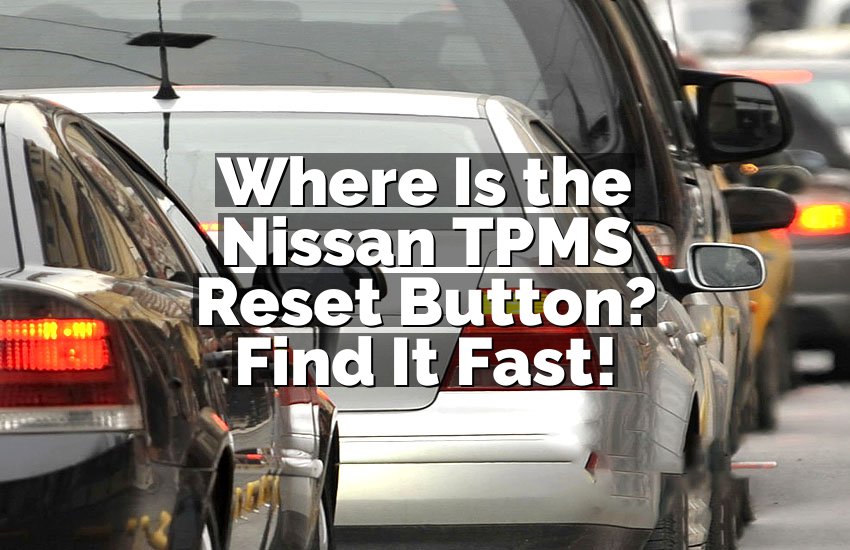Have you ever sat in your car, turned the key or pressed the start button, and… nothing happens? It’s frustrating, right? You start wondering if the car’s engine is having a bad day or if you missed something obvious. One of the most common causes of a car not starting is faulty sensors. But which ones? What exactly do they do, and how can you fix them?
In this article, we’re going to talk about the different sensors in your car that might be the reason your car isn’t starting. Don’t worry; it’s not as complicated as it sounds. We’ll break it down for you in a simple, easy-to-understand way. Whether you’re a seasoned car expert or just someone who needs to get to work, you’ll get the knowledge you need to figure out why your car isn’t starting.
The Role of Sensors in Your Car
Before we dive into specific sensors, let’s first take a moment to understand the role sensors play in your vehicle. Sensors are like the car’s “nervous system.” They monitor all sorts of things, from how much fuel you’re using to the air quality inside the cabin. They send data to your car’s computer, which makes decisions to keep everything running smoothly.
Some sensors are responsible for making sure your car starts properly, while others make sure it keeps running once it’s going. Without sensors, your car wouldn’t be able to operate as efficiently or safely. But when these sensors malfunction, it can prevent your car from starting, or even cause it to stall. Let’s look at the sensors that could be behind your car troubles.
Crankshaft Position Sensor: The Brain Behind the Engine’s Timing
One of the most important sensors in your car’s engine is the crankshaft position sensor. This sensor tells the engine control unit (ECU) the exact position of the crankshaft. Why does that matter? Well, the crankshaft is what makes the engine run. It controls the timing of the engine’s valves and fuel injectors.
When the crankshaft position sensor goes bad, your car may fail to start or have difficulty turning over. Without the correct data from this sensor, the ECU can’t tell the engine how to function. Imagine trying to start your car without knowing when to fire up the engine. It just wouldn’t work.
What causes the crankshaft position sensor to fail?
- Dirt or debris: Over time, dirt and debris can accumulate on the sensor, causing it to fail.
- Wiring issues: If the wires connected to the sensor are damaged or loose, the sensor won’t be able to send data to the ECU.
- Heat: Overheating can cause the sensor to wear out prematurely.
How to fix it:
- First, check for any visible damage to the sensor or its wiring.
- If you find no visible issues, you may need to replace the crankshaft position sensor. This usually requires removing the old sensor and installing a new one, which can be done yourself with the right tools or by taking your car to a mechanic.
Camshaft Position Sensor: Telling the ECU How the Engine Is Spinning
The camshaft position sensor works alongside the crankshaft position sensor. While the crankshaft sensor tracks the position of the crankshaft, the camshaft sensor monitors the camshaft’s position. This is important for the timing of the engine’s fuel injectors and ignition system.
If your camshaft position sensor fails, the engine control unit will have trouble determining the timing of fuel injection, which could prevent the engine from starting. You might hear the car cranking but never quite turning over.
What causes the camshaft position sensor to fail?
- Wear and tear: Over time, sensors simply wear out.
- Faulty wiring: As with the crankshaft sensor, loose or damaged wires can prevent the sensor from sending correct data.
- Oil contamination: Sometimes, oil can leak into the sensor area, causing it to fail.
How to fix it:
- If your sensor is malfunctioning, the first step is to check the wiring for any visible damage.
- Replacing the camshaft position sensor is often a simple process, which involves locating the sensor, removing it, and installing a new one. If you’re unsure, a mechanic can help with this task.
Fuel Pressure Sensor: If Your Car Isn’t Getting Enough Fuel
The fuel pressure sensor is responsible for monitoring the pressure of the fuel being delivered to your engine. Without the right amount of fuel pressure, your engine won’t start or run correctly. If the fuel pressure sensor detects too little pressure, it signals the ECU to stop the engine from trying to start.
What causes the fuel pressure sensor to fail?
- Clogged fuel filter: A clogged filter can restrict fuel flow, affecting the sensor’s readings.
- Fuel pump issues: If your fuel pump is malfunctioning, the sensor may pick up incorrect pressure levels.
- Electrical problems: As with most sensors, faulty wiring can prevent accurate readings.
How to fix it:
- If the sensor is showing faulty readings, you may need to replace it. In some cases, cleaning the fuel system or replacing the fuel filter might solve the problem.
- Always ensure your fuel pump is working correctly. If it’s not, your car may not start, even if the sensor seems fine.
Mass Airflow Sensor: The Gatekeeper of Air Flow
The mass airflow (MAF) sensor measures the amount of air entering the engine. This is crucial because the engine needs a perfect balance of air and fuel to run properly. If the MAF sensor fails, your engine may not get the right amount of air, which could prevent it from starting.
What causes the MAF sensor to fail?
- Dirt and debris: Over time, the sensor can accumulate dirt or grime that affects its performance.
- Electrical failure: Just like other sensors, the MAF sensor can stop working if there’s an issue with its wiring.
- Air filter issues: A clogged air filter can restrict air flow, affecting the sensor’s readings.
How to fix it:
- The first step is to clean the sensor. This can be done with special MAF cleaner that you can buy from an auto parts store.
- If cleaning doesn’t work, you may need to replace the sensor entirely. Be sure to install a high-quality replacement part for the best results.
Throttle Position Sensor: Controlling Your Car’s Throttle
The throttle position sensor (TPS) monitors the position of the throttle in your car, which controls how much air enters the engine. If the TPS fails, your car may struggle to start or idle properly. This is because the ECU won’t know how much air to mix with the fuel for proper combustion.
What causes the TPS to fail?
- Worn-out components: Over time, the internal components of the sensor can wear down, affecting its performance.
- Electrical issues: Faulty wiring can cause the sensor to send incorrect data to the ECU.
- Contamination: Dirt or oil buildup can affect how the sensor reads the throttle position.
How to fix it:
- Replacing the TPS is usually the solution. You can find a replacement at an auto parts store or online. After installing the new sensor, be sure to test the throttle to ensure everything is working properly.
Oxygen Sensor: Keeping Your Engine’s Air-Fuel Mixture Balanced
The oxygen sensor monitors the amount of oxygen in your car’s exhaust. This helps the ECU adjust the air-fuel mixture for maximum efficiency. If the oxygen sensor fails, it can cause your engine to run rich (too much fuel) or lean (too little fuel), both of which can make it difficult to start.
What causes the oxygen sensor to fail?
- Excessive wear: Over time, the oxygen sensor can wear out due to constant exposure to heat.
- Contamination: Oil, coolant, or other contaminants can damage the sensor.
- Old age: Like any other sensor, the oxygen sensor has a lifespan. If it’s too old, it may not work correctly.
How to fix it:
Replacing the oxygen sensor is the best solution. Fortunately, this is a relatively easy fix, and you can do it yourself with the right tools. Be sure to use the correct sensor for your car model to avoid any issues.
I hope this article helped you understand which sensors can cause your car not to start. It’s never fun when your car refuses to cooperate, but knowing what might be going wrong can make all the difference. Whether you fix the problem yourself or take it to a professional, understanding the issue is the first step. Always make sure to check your car’s sensors regularly to avoid problems in the future. Happy driving!
Frequently Asked Questions
Is it possible for a bad crankshaft position sensor to cause a car to stall?
Yes, a bad crankshaft position sensor can cause your car to stall or fail to start. This sensor plays a crucial role in determining when to inject fuel and fire the spark plugs. Without the right signals, the engine may not start or could stall while driving.
Can a malfunctioning fuel pressure sensor affect the car’s ability to start?
Absolutely. A malfunctioning fuel pressure sensor can cause your car to struggle when starting. The fuel pressure sensor ensures that the engine gets the right fuel pressure, so if it detects a problem, it can prevent the engine from starting altogether. You may need to replace the sensor or check for fuel pump issues.
Do I need to replace the camshaft position sensor to fix starting issues?
If the camshaft position sensor is faulty, your car may experience difficulty starting or not start at all. Replacing the sensor can help solve the issue. However, it’s essential to ensure no other underlying issues, like wiring problems or oil leaks, are affecting the sensor.
Is it possible to clean the mass airflow sensor instead of replacing it?
Yes, cleaning the mass airflow (MAF) sensor can sometimes restore its performance. You can use a special MAF cleaner to remove dirt and debris that might be interfering with the sensor. If cleaning doesn’t solve the issue, replacing the sensor may be necessary.
Can a faulty throttle position sensor cause engine misfires?
Yes, a faulty throttle position sensor can cause engine misfires, poor acceleration, or stalling. The sensor monitors the position of the throttle and adjusts the engine’s air-fuel mixture. If it fails, your car may struggle to start or run smoothly.
Is it safe to drive with a bad oxygen sensor?
Driving with a bad oxygen sensor is not ideal. It can lead to poor fuel economy, increased emissions, and engine performance issues. While it might not cause immediate damage, it’s best to replace a faulty oxygen sensor to keep your car running smoothly and efficiently.
Can a damaged crankshaft position sensor be repaired?
In most cases, a damaged crankshaft position sensor cannot be repaired. You’ll likely need to replace the sensor with a new one. It’s a relatively simple process, but if you’re unsure, it’s best to consult a professional mechanic.
Is it expensive to replace the camshaft position sensor?
Replacing a camshaft position sensor is generally not too expensive. The cost can vary depending on your car model and the labor costs of your mechanic. On average, it might cost anywhere from $150 to $350. It’s a good idea to get a few quotes to compare prices before proceeding with the repair.


